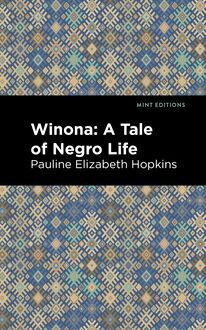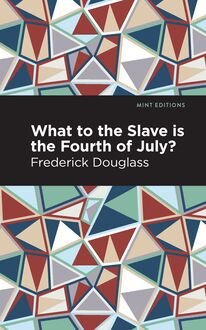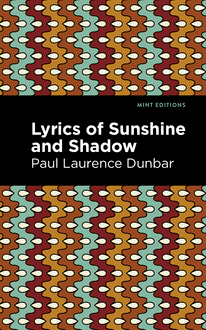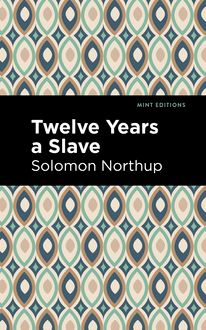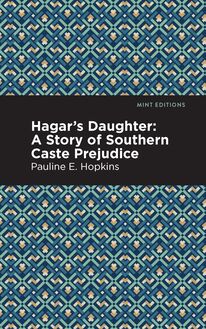-
 Univers
Univers
-
 Ebooks
Ebooks
-
 Livres audio
Livres audio
-
 Presse
Presse
-
 Podcasts
Podcasts
-
 BD
BD
-
 Documents
Documents
-
- Cours
- Révisions
- Ressources pédagogiques
- Sciences de l’éducation
- Manuels scolaires
- Langues
- Travaux de classe
- Annales de BEP
- Etudes supérieures
- Maternelle et primaire
- Fiches de lecture
- Orientation scolaire
- Méthodologie
- Corrigés de devoir
- Annales d’examens et concours
- Annales du bac
- Annales du brevet
- Rapports de stage
La lecture à portée de main
Vous pourrez modifier la taille du texte de cet ouvrage
Découvre YouScribe en t'inscrivant gratuitement
Je m'inscrisDécouvre YouScribe en t'inscrivant gratuitement
Je m'inscrisEn savoir plus
Vous pourrez modifier la taille du texte de cet ouvrage
En savoir plus

Description
Black and White Tangled Threads (1920) is a novel by African American author Zara Wright. Published at the beginning of the Harlem Renaissance, Wright’s novel earned nationwide praise as a “realistic portrayal of individuals and events [that] lifts one to the heights of earthly ambitions.” Despite this critical success, Wright does not appear to have written more than Black and White Tangled Threads and its sequel, Kenneth, which were published together in 1920. Although recent scholars have made attempts to return her name to its rightful place on the pantheon of pioneering African American writers, mystery still clouds her life and career to this day. Like many of her contemporaries, Wright took interest in the sociopolitical realities of life as a Black or mixed-race person in the early twentieth century. In this novel, she explores the consequences of passing, interracial marriage, and class on the lives of individuals in the United States and Europe. Black and White Tangled Threads is a story of love, family, and faith from a forgotten writer of the Harlem Renaissance. With a beautifully designed cover and professionally typeset manuscript, this edition of Zara Wright’s Black White and Tangled Threads is a classic work of African American literature reimagined for modern readers.
Sujets
Informations
| Publié par | Mint Editions |
| Date de parution | 28 mai 2021 |
| Nombre de lectures | 0 |
| EAN13 | 9781513288086 |
| Langue | English |
| Poids de l'ouvrage | 3 Mo |
Informations légales : prix de location à la page 0,0500€. Cette information est donnée uniquement à titre indicatif conformément à la législation en vigueur.
Extrait
Black and White Tangled Threads
Zara Wright
Black and White Tangled Threads was first published in 1920.
This edition published by Mint Editions 2021.
ISBN 9781513283067 | E-ISBN 9781513288086
Published by Mint Editions®
minteditionbooks .com
Publishing Director: Jennifer Newens
Design & Production: Rachel Lopez Metzger
Project Manager: Micaela Clark
Typesetting: Westchester Publishing Services
To the M EMORY of My Dear Departed Husband,
J. E DWARD W RIGHT ,
who inspired me to write this book, hoping to interest and possibly benefit someone. May the unselfishness and noble qualities of the heroine be productive of good results and an inspiration to those who are too weak to do their duty as they see it and too cowardly to do that which is just and right for fear of criticism.
Z ARA W RIGHT
I found a little rosebud that had been left alone,
Tenderely I gathered it, watered it with dews of love;
Now I find as its leaves unfold,
A flower most rare with a heart of gold.
C ONTENTS P REFACE I NTRODUCTION I. T HE T HREE C OUSINS II. T HE L ITTLE O RPHAN III. C ATHERINE’S J EALOUSY IV. T HE N EW T ENANT V. T HE A BDUCTION VI. Z OLEETA IN HER P RISON H OME VII. R ALPH Y ATES VIII. Z OLEETA’S E SCAPE IX. S AFE AT H OME X. D EATH OF M RS. M ARCEAUX XI. R ALPH’S R ESOLUTION XII. T HE B ROKEN T ROTH XIII. L ADY B LANKLEIGH’S M ISSIONS XIV . R EUNITED K ENNETH I. T HE W RECK II. D OCTOR AND P ATIENT III. D R. G RAYSON AND K ENNETH R ANDOLPH IV. D R. G RAYSON AND THE M ILLIONAIRE’S D AUGHTER V. A N E NIGMATICAL S ITUATION VI. A LICE AND D IAN VII. K ENNETH’S P LEA FOR THE C OLORED L AD VIII. T HE R EFLECTIONS OF A LICE IX. A S ISTER’S H ATRED X. K ENNETH AND HIS F ATHER XI. K ENNETH AND D IAN XII. D R. G RAYSON’S R ESOLVE XIII. A LICE XIV . T HE W EDDING XV. H ARVEY G RAHAM XVI. A LICE’S R EQUEST XVII. D R . G RAYSON AND M RS. B LAIR XVIII. D R. G RAYSON P ROCURES M ARRIAGE L ICENSES XIX. D R. G RAYSON AND O DENE XX. O DENE XXI. C ONVALESCING XXII. A C HILD S HALL L EAD T HEM XXIII. D R. G RAYSON’S I LLNESS XXIV. N URSE A LICE XXV. M ARK AND A LICE XXVI. H ERBERT AND J AMES XXVII. K ENNETH AND A GNES XXVIII. D IAN M AKES A D ISCOVERY XXIX. T HE A RRIVAL IN E NGLAND XXX. L ADY B LANKLEIGH’S S ORROW XXXI. K ENNETH AND D IAN’S A RRIVAL
P REFACE
To
Black and White Tangled Threads
I n writing this book I wish to impress its many readers, that this great and beautiful world in which we live, is sufficient in its greatness for all to live in peace and harmony. That in future years there may be no necessity for conflicts and wars to make any country safe to live in. We are commanded to love our neighbor as ourselves. If we followed this commandment, the conditions in which we live would be made more tolerable. We would find fewer obstacles in the path that leads to success and eventually the Heights. I feel that if one person has been benefited by reading the story written in these pages, that my efforts, although feeble, will not have been in vain.
Every life must have its shadows, and the tempestuous storm Only makes brighter the beautiful unfolding down.
T HE A UTHOR
I NTRODUCTION
To Black and White Tangled Threads
T he lives of each character portrayed in this book remind one of tangled skeins of threads. The heroine of this story portrays a type of womanhood so often sought for, so rarely found. Circumstances having placed her in a false position, she sacrifices her principles of right and wrong to save those near and dear to her from imaginary shame and humiliation. Paul Andrews, a southern planter, vies with the heroine in sharing honors. One cannot help admiring him. He plays an important part in this story. There are other characters that play such distinctive parts that we must leave it to the imagination of the reader to decide which is the most appealing.
In this story you will find food for sane and serious thought, eliminating much sordidness that often mars a story, leaving the reader with neither desire nor inclination to either remember or discuss its contents afterward. I sincerely hope that the many readers of Black and White Tangled Threads and the sequel, which we find under the same cover, may leave a sweet memory and that there will be a genuine sigh of regret when we read the last word, F INIS .
T HE A UTHOR
I
T HE T HREE C OUSINS
I t was late in the month of September and it had been raining hard since early morning. Now, at the close of day it seemed as if the clouds felt ashamed and disappeared from view, the sun shedding its last rays over the distant hilltops and the valley beneath, the mellow light causing the raindrops that linger on tree and bush to look like pearls. This beauteous aspect of nature makes one loath to leave the scene and enter where art alone is responsible for the beauty of the interior of a grand old mansion, situated on one of the largest plantations of the Sunny South.
Thus felt a beautiful young girl as she stood enchanted while the soft breeze gently blew her long black hair in confusion around her exquisite face.
After repeated calls from her cousins, she turned and entered the house, where they were soon discussing an important event. They were to start North in a few days to enter a select boarding school for young ladies.
Catherine Marceaux was the eldest, just sixteen, the daughter of a haughty, impoverished widow, who was a sister to Paul Andrews, the owner of the mansion.
Paul Andrews, tall and handsome, had married and lost his wife in just one year, leaving a little daughter whom he called Aline after her mother. She was a sweet child, possessed of a sunny disposition that won her the name of “Little Sunbeam,” and was beloved by everyone.
The father idolized his child and she in turn fairly worshipped her father and would often leave her play and be found in the library, sitting contentedly at his feet for hours, sometimes falling asleep while waiting for him to put aside his books and papers. Then she would feel rewarded by the welcome he gave her. He often wished that his dead wife could see their lovely daughter.
The third cousin, the heroine of this story, is the most beautiful of the three. Her face is oval and her features are perfect, yet some thought that the nose was inclined to tilt upward. But if you would observe more closely you would find that it was the upward poise of the head that was misleading. Her complexion was fair although of a richer hue than her cousins, and her wonderful jet black hair hanging in long natural curls reached far below her waist and made her look most fair indeed, and no one would suspect that there flowed in her veins blood of a despised race,—the black slaves of the South. But such was the case. Zoleeta Andrews was a full cousin to Catherine Marceaux and Aline Andrews. The children of two brothers and one sister. Mrs. Marceaux bitterly resented it when her brother Paul brought home their orphan niece, making her one of the family, and as she expressed it, compelling them to come in contact with that negro child. She declared that Catherine should not recognize her as a relative.
To make matters worse, her brother was determined that Harold’s child should have the same accomplishments and advantages as their children. It was in vain that his sister cried and pleaded to have Harold’s child sent elsewhere, for Paul was inexorable, and she was compelled to abide by his decision.
Eighteen years preceding the events recorded, Paul Andrews and his sister Claretta, and a younger brother named Harold, lived with their parents, General and Mrs. Andrews, in the present homestead. At the age of eighteen Claretta married a man by the name of Leroy Marceaux, who was of French descent, as his name would imply.
It was some years later that their brother Harold ran away with and married Mildred Yates, a slave girl belonging on the plantation. His mother never recovered from the shock, shame and humiliation, but in the end forgave him and begged his father to forgive him also. Two years later, when General Andrews was laid beside his wife, Harold was still unforgiven.
Paul and his sister inherited all of the vast wealth. The homestead, a fine old mansion, fell to Paul. A few years later he had it remodeled and refurnished and no one was much surprised when he brought home a lovely bride. She was dearly beloved by all, but died a year later at the birth of their daughter Aline.
When Claretta married, her father gave her a liberal fortune, which she placed in the hands of her husband, subsequently she placed in his hands the entire fortune that she inherited through the death of her father. A few years later when her husband passed away, it was found that there was nothing left of the large fortune that had once been hers. It was then that her brother Paul went after her and brought her and her little daughter to take charge of his handsome home, to rear his child and manage the servants. She gladly accompanied her brother and was once more installed in her girlhood home.
Mrs. Marceaux was very domineering to those whom she considered her inferior and often took her brother to task for being too lenient with the servants. She was horrified to see his little daughter Aline walking hand in hand with the little colored children, but her brother only laughed and said there was no harm and that the children had but few pleasures and some of those consisted of being with his daughter and he had not the heart to separate them.
In a few years Aline would enter boarding school and all would be changed. But his sister could not forget how their brother Harold had disgraced them, and not having her brother’s optimistic views, remained unconvinced of the wisdom of the association.
Mildred Yates, the slave girl whom Harold married, had more education than the average slave girl. Her mother, a trusted servant of old Mrs. Andrews, had taught her to read and write and she
-
 Univers
Univers
-
 Ebooks
Ebooks
-
 Livres audio
Livres audio
-
 Presse
Presse
-
 Podcasts
Podcasts
-
 BD
BD
-
 Documents
Documents
-
Jeunesse
-
Littérature
-
Ressources professionnelles
-
Santé et bien-être
-
Savoirs
-
Education
-
Loisirs et hobbies
-
Art, musique et cinéma
-
Actualité et débat de société
-
Jeunesse
-
Littérature
-
Ressources professionnelles
-
Santé et bien-être
-
Savoirs
-
Education
-
Loisirs et hobbies
-
Art, musique et cinéma
-
Actualité et débat de société
-
Actualités
-
Lifestyle
-
Presse jeunesse
-
Presse professionnelle
-
Pratique
-
Presse sportive
-
Presse internationale
-
Culture & Médias
-
Action et Aventures
-
Science-fiction et Fantasy
-
Société
-
Jeunesse
-
Littérature
-
Ressources professionnelles
-
Santé et bien-être
-
Savoirs
-
Education
-
Loisirs et hobbies
-
Art, musique et cinéma
-
Actualité et débat de société
- Cours
- Révisions
- Ressources pédagogiques
- Sciences de l’éducation
- Manuels scolaires
- Langues
- Travaux de classe
- Annales de BEP
- Etudes supérieures
- Maternelle et primaire
- Fiches de lecture
- Orientation scolaire
- Méthodologie
- Corrigés de devoir
- Annales d’examens et concours
- Annales du bac
- Annales du brevet
- Rapports de stage

